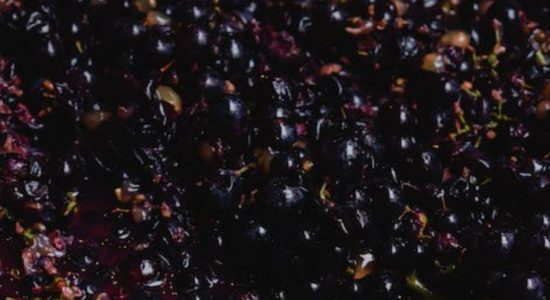How To Remove That Sour Taste From Your Wine

There’s nothing worse than opening up a bottle of wine and realizing it tastes sour. Sour wine can seem unredeemable, but fortunately, you don’t have to throw the batch away. There are a few steps you can take to get rid of that sour taste.
Here’s how to remove that sour taste from your wine:
- Use heat to kill bacteria and organisms in the wine.
- Add an acid-reducing chemical compound to your wine.
- Dilute your wine with water.
- Add a sweetener to your wine.
- Cool your wine at borderline-freezing temperatures.
- Combine your wine with another wine or juice
Sour wine occurs primarily due to incorrect acid levels within the drink. Therefore, in this article, I’ll mainly talk about restoring your wine to proper acid levels to remove the sour taste.
- Use Heat To Kill Bacteria and Organisms in the Wine
You can pasteurize your wine to kill unwanted bacteria or organisms. This process is usually done with moderate heat, with temperatures not exceeding the boiling point of water.
Using heat to treat your wine can help eliminate that sour taste and prolong the life of your beverage. Please note that you should only heat-treat your wine after it has fermented.
Yeast is a type of fungal microorganism that is crucial to fermenting alcoholic drinks, such as wine. However, too much of it can raise the acid levels in your wine, making it taste sour.
Heat-treating your wine kills the excess yeast in your wine. So follow these steps to remove the sour taste from your wine using heat.
How To Heat-Treat Your Wine
Heat-treating wine is easy. Just follow the steps below and your wine should be good to go:
- Degas your wine to remove carbon dioxide. Excess carbon dioxide is another reason why your wine can taste sour. You can degas wine three ways: waiting for it to degas naturally with time, using a process called agitation, or creating a vacuum.
- Add sugar to your wine. This is a process called back-sweetening, and it’s crucial to do this after your wine has fermented. You can use sugar or another sweetener to sweeten the wine to your desired liking.
- Fill your bottles. Be careful not to fill the bottles to the rim, but allow room for the wine to expand as it gets warmer. If you fill the bottles to the top, they will shatter or burst when the wine starts to grow since there isn’t any extra room to accommodate the wine.
- Cover your wine bottles with aluminum foil. The foil prevents other materials from getting inside the bottles and ensures that your wine doesn’t escape or evaporate from the top.
- Warm up the bottles using the stovetop method. The bottles shouldn’t touch the bottom of the pot. You can stack boiling pots or use a pressure cooker to prevent this from happening. Pour water into the pot and put it on medium heat.
- Bring it to a boil and let it boil for 15-30 seconds to kill the unwanted yeast and bacteria. Remove the bottles and let them cool completely.
- Alternatively, you can use the oven method. Put the bottles into an unheated oven. Then, turn the oven to around 250 degrees Fahrenheit (121 degree Celsius).
- Once the oven reaches around 250 degrees (121 degrees Celsius), let the bottles warm for 30 minutes. After 30 minutes, turn off the oven but keep them inside until they are completely cool.
- After the bottles have cooled to room temperature, you can label and cork them. Store them for future consumption.
2. Add an Acid-Reducing Chemical Compound to Your Wine
Adding acids to your wine can be one of the solutions to your problem. There are several ways to do this.
Adding Potassium Bicarbonate to Wine
Potassium bicarbonate is one of the most common chemicals for reducing acid levels in wine. It’s a nifty solution to help eliminate the sour taste in your wine, and you can purchase potassium bicarbonate conveniently in pre-packaged crystal form.
This package of Homebrew Ohio Potassium Bicarbonate (available on Amazon.com) is an inexpensive solution for removing the sour taste from your wine. This convenient acid-reduction powder is available in a small 2-oz (57 g) package and quickly reduces your wine’s acidity level.
Adding Calcium Carbonate to Wine
Calcium Carbonate is another highly efficient chemical compound that many winemakers use to reduce the acidity in their wines, particularly grape wines.
Calcium carbonate is affordable and can be purchased online in various quantities ranging from 50-gram (1.76-oz) to 50-pound (23-kg) packages.
Unlike potassium bicarbonate, calcium carbonate is likely to affect the flavor of the wine. It’s important to know that the calcium carbonate will foam when it’s added to the wine, so when mixing, make sure to leave room for the chemical reaction that will take place.
It’s also recommended that you wait about a full day after you add the mixture before you rack the wine.
While many acid-reducing chemicals are in powder or crystal form, there are some liquid acid-diluting options that you can add to your wine, too, such as this CalciBlend Wine Tamer (available on Amazon.com).
The wine tamer comes in a convenient bottle dropper and helps safely reduce acid in red and white wine without changing the taste.
Adding Sulfur Dioxide to Wine
Adding sulfur dioxide to wine isn’t anything new, as those experienced in winemaking have been doing it for ages. There are many benefits to adding sulfites to wine, such as reducing the growth of organisms and bacteria and aiding against wine oxidation.
Sulfites can reduce the acid levels in wine and help eliminate that sour taste. You should be mindful of how much sulfur you use with the wine because too much can be toxic.
Moreover, you should know that some people have sulfite sensitivities, so they could be negatively affected by ingesting sulfites in wine.
The most common practices in adding sulfur to wine include sulfur powders or liquid added to the drink. However, you can also use sulfur in wine bottles or storage barrels to kill bacteria and eliminate excess oxygen, which can cause wine oxidation.
Oxidation in wine occurs when it is exposed to too much air, which begins a reaction in the wine, which changes its chemical properties. When the wine’s chemical components change, so do the color and taste.
Wine oxidation could cause a tart and sour taste in your wine. So, adding sulfite or sulfur dioxide to your mix could help reduce oxidation and eliminate that undesirable taste.
3. Dilute Your Wine With Water
Water dilution is another common practice for getting rid of that sour taste in your wine. However, unlike the previous wine purification processes that occur after fermentation, water dilution must occur before the wine is fermented.
Diluting your wine is easy. All you have to do is add water to it. Aim for distilled water since it’s free from minerals or other unwanted ingredients.
Unfortunately, diluting your wine will also impact the taste, which is why many people prefer other methods for getting rid of that sour wine taste. However, you can measure the acid levels of your wine to see how much water you should add to it.
4. Add a Sweetener to Your Wine
Adding sugar to your wine is another excellent way to offset the sour taste. However, it’s essential to be careful and not over-sweeten your wine. While sugar is the most common sweetener to offset an awful taste, it’s not the only ingredient that can sweeten your wine.
Unfermented grape juice, brown sugar, molasses, or even honey are other excellent sweeteners to add to your wine. Sweetening your wine is another step you can take before your wine ferments to offset the sour taste of highly acidic wine.
5. Cool Your Wine at Borderline-Freezing Temperatures
Wine is typically stored in a cool, dry place, such as a wine cooler, to prevent excess moisture buildup and keep your wine from spoiling. Ordinarily, you want to keep your wine at room temperature, and you don’t want it to be too cold.
However, there’s a way that you can use colder temperatures to your advantage when trying to remove a sour taste from your wine.
While you usually store wine at around 55 degrees Fahrenheit (12.78 degrees Celsius), you can refrigerate it at about 32 – 40 degrees Fahrenheit (0 – 4.44 degrees Celsius) for two to three weeks.
The process of keeping wine cold for prolonged periods is called cold stabilization. The cold temperatures will work to neutralize the wine, kill off some of the bacteria that are making the wine acidic, and transform the sour taste.
Putting your wine in temperatures as close to freezing as possible works to rebalance the pH levels in the wine, which are typically off-balance if the wine is tasting sour.
If, after three weeks, the wine still has a sour taste, you can leave it in cold temperatures for three more weeks to try to eliminate the sourness further.
6. Combine Your Wine With Another Wine or Juice
Combining your sour wine with another wine or juice can help enhance the taste and eliminate the tart or sour taste. Combine a sour-tasting wine with a much sweeter wine for a rich, unique, and layered flavor. Alternatively, you can add juice to the sour wine to sweeten it up.
How To Mix Wines for a Great-Tasting Drink
Use the following steps to mix your wines for the best-tasting concoction:
- Find a new, inexpensive sweet bottle of wine. Try to find an option that you think will pair well with your current sour wine. Identify fruit and flavor elements in both wines that will go together so that you will get the best taste.
- Remove any crystals or sediment in the old wine. If the pH balance has negatively affected the wine, there could be crystals that have accumulated in the bottle. It’s essential to remove those with a filter before mixing the wine.
- Slowly add the old wine to the new wine bottle. Mix thoroughly and taste often to ensure the flavors blend well. Depending on the severity of the sour wine, you may need to add more or less of the old wine so as not to overpower the new, sweet wine.
- Taste and enjoy. If you’ve found the perfect ratio between the sour and sweet wine, you can purchase another bottle of the sweet wine and mix in the sour variety until it is used up.
How To Mix Juice With Your Sour Wine To Change the Flavor
Unlike mixing wines, where you could have one part sour wine to three parts sweet wine, when mixing wine and juice, you need to use equal parts of wine and juice together. Remember to use natural juices without excess sugar and not a juice concentrate, then, do the following:
- Gather your fruit juice. When gathering the juice to add to the wine, choose the same fruits in your original wine to help keep the same flavor. Did you have a pear wine that turned sour? Opt for fresh pear juice when combining the wine.
- Use red apples with red apples and green grapes with green grapes to keep the same consistency within the flavor. Non-concentrated grape juice is a great starting point to add to most wines.
- Remove excess crystals or sediment. As mentioned previously, sometimes crystals can gather within sour wine. Be sure to remove those first before beginning with the mixing process.
- Use equal parts juice and wine as your blend. For every cup of wine, use a cup of fruit juice to the mix. Mix thoroughly to combine the juice with the wine, and taste it often to ensure everything is going well.
Key Takeaways
Although sour wine can be a letdown, it’s not utterly unredeemable. Most times, wine is sour due to high acidity or mismatched pH levels. Thankfully, when this happens, you can fix sour wine by following a few simple steps.
You can use temperature to restore sour wine by heating it to remove organisms or cooling it to balance the acidity. Diluting it, adding sweeteners, or mixing the wine with a sweeter wine or juice are all effective and practical ways to remove that dreaded sour taste.







